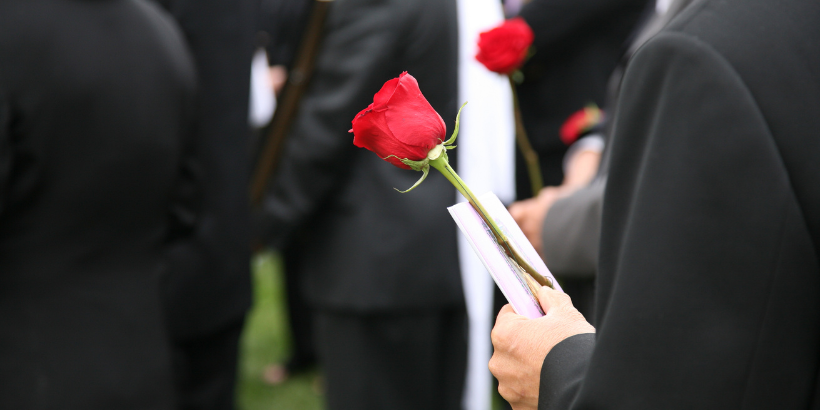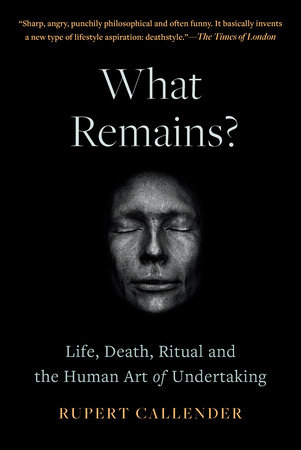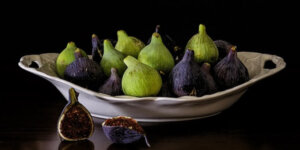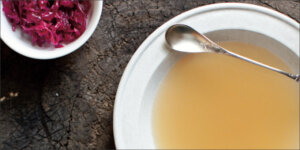From the Eyes of An Undertaker: Grieving & Healing

“Death is not my friend, neither is it my enemy; it is my destiny.” – Ru Callender
When he became an undertaker, Ru Callender undertook to deal with the dead for the sake of the living. As the world’s first “punk undertaker,” Callender and his partner challenged the stilted, traditional, structured world of the funeral industry to help people say goodbye to the people they love in their own way. In the passage below, Callendar describes the personal experiences and struggles that came from his chosen career path.
The following is an excerpt from What Remains? Life, Death, Ritual and the Human Art of Undertaking by Ru Callender. It has been adapted for the web.
A Tough Job: Quite the Undertaking
I had been an undertaker for nearly twenty years, after a moment of Damascene, vocational insight that had catapulted me off my stoned indolent sofa existence and into this most unlikely of careers.
The way I practised my trade, first on my own, but soon with a friend who became my partner, was very different from the mainstream funeral establishment, involving a level of deliberate emotional engagement that was considered reckless to our mental health and that of those we helped. Undertakers were meant to guard themselves and their charges against the sadness and emotion like doctors and policeman, not rush towards it like Quakers or protesting Buddhist monks.
I was right that this small, immersive approach, intimate and shorn of all formality and the faux Victoriana traditions that characterised the traditional British funeral, was so much better for the families we were helping. I knew that it was better to cry with them around their unadorned dead than sell them an expensive coffin. I knew that it was better to turn up in a scruffy car and be real, rather than appear in a black suit with a composed persona and a fixed patter. But I also knew we were risking so much of ourselves by opening our hearts and our heads, our very lives, to this unending stream of sadness.
Those early days were filled with zeal and fervour, fuelled by my own many bereavements and a clear understanding of what not to do – always a good starting point for some- thing completely new. But my bluff was called very early, with a sudden, almost immediate immersion into the real nature of death and funerals, suicides, accidents and children – all far from what I imagined, which was an orderly procession of the ill and elderly. It was psychologically and spiritually jarring, but it was also my initiation; I needed to test my mettle.
An Honest Healing Journey: Handling Trauma
Back then, the sadness and horror and the out-of-depthness had been things that I had processed and danced out of my system at all-night raves, and I was buoyed up by my belief in what I was doing, which never faltered and never will.
I had started to take the ceremonies too, and had discovered a talent for creating an honest portrait of someone I had never met, for knowing what to say to the living about the dead, about life and death itself. A strange and unexpected mix of ghost writing and sermonising, a high-wire act that could go horribly wrong at any point. The front I had then I don’t recognise now, it seems breathtakingly reckless.
And the partnership with my friend Claire had inevitably intensified into love and marriage, so the emotions that were stirred up by our daily confrontations with such deep sorrow were held and contained within our relationship.
We cried as we danced till dawn.
It worked then, keeping the grief flowing through us, healing my own mismanaged childhood grief and allowing us to fully engage with the sadness of each family we encountered.
But that was many years ago. I no longer danced all night long once a month with friends, beatified by ecstasy. And the comfort and security of our marriage had started to crumble, the inevitable result of living and working together alone in a job that has enormous pressures.
Yet the grief and the sadness in our working life continued to grow as our reputation built and we were handed from one family tragedy to another, a secret gift from the most wounded to the newly numb.
As with all jobs that involve trauma, the traditional coping strategies are gallows humour and alcohol. We never went in for the gallows humour, although Claire has a great ability to know when to first crack a joke with a new family, but I had long struggled with self-medicating my own childhood wounds through drink and drugs, and letting off steam could easily slide into compulsion and addiction.
I had a good therapist, but therapy alone wasn’t enough to be entirely free from the ringing in the ears that so much death brought. I had started to lean in more to art as a way of reframing myself. Art, and what might be described as ritual magic.
Recommended Reads
Recent Articles
The fig tree is more than just a fruit-bearing wonder. The complex nature of these trees is beyond fascinating. They are the ultimate ecosystem superheroes!
Read MorePumpkins: Halloween symbol or sweet treat? But have you ever wondered how they became a holiday staple? Discover the rich history behind this fall favorite!
Read MoreYou’ve Been Missing Out! Bone Broth is the ultimate superfood, packed with nutrients and goodness. Consider adding this nutrient-rich, immune system boosting bone broth into your daily diet.
Read MoreThese small fruits are a delicious source of nutrients that you can find almost anywhere. Get started on acorn harvesting with help from these simple tips!
Read MoreWondering what to do with pumpkin seeds? Instead of roasting them, try these alternative ways to prepare & use seeds! Plus a must-try pumpkin granola recipe.
Read More










